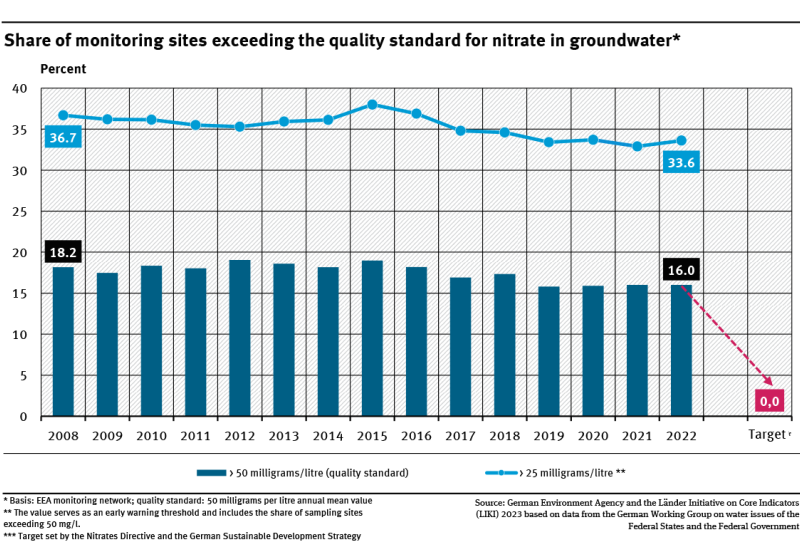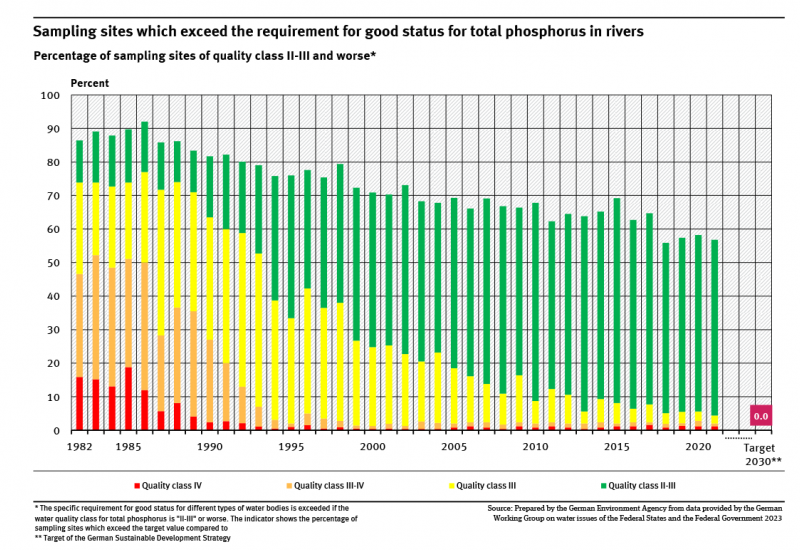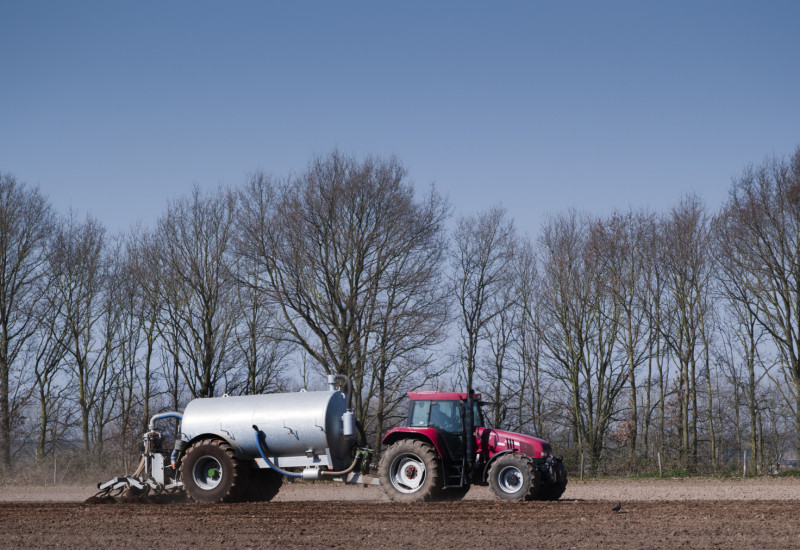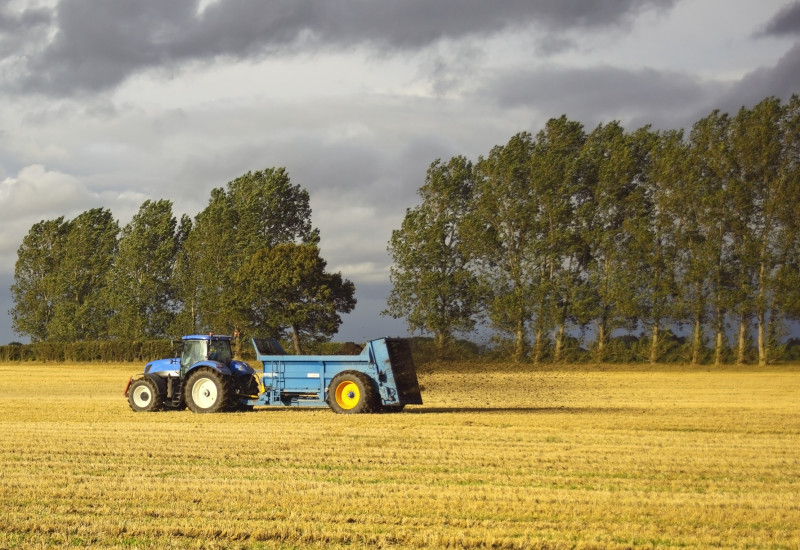The European Nitrates Directive, the Groundwater Directive and the German Groundwater and Drinking Water Ordinances require that exceedances of the limit value for nitrate of 50 milligrams per liter be prevented.Since 2008, the quality standard has been exceeded every year at almost one in six measuring points.Extensive changes to the fertilizer legislation have allowed the designation of particul... read more
fertilizer
Umwelt-Indikator
Indicator: River eutrophication by phosphorus
Too high phosphorus concentrations are measured at more than half of all river measurement stations in Germany.The share has declined by around one third since the beginning of the 1980s. Extreme levels of pollution are very rare nowadays.Aim of the Sustainability Strategy is to meet the requirements for good status for phosphorous in all water bodies by 2030 at the latest.This requires a change i... read more
Agriculture
Fertilizer
In order to develop and grow, apart from adequate water, plants need nutrients such as nitrogen, phosphate and potassium and trace elements such as copper and zinc. Only if these requirements are met can high yield, high quality crops be obtained. Crop plants obtain nutrients and trace elements from the soil via their root systems, a process in which soil humus content plays an instrumental role.... read more
Agriculture
Ecological impact of farming
Germany’s farming sector uses the largest amount of land, but is at the same a lynchpin of our economy – one that provides a reliable food supply and produces sustainable raw materials. The farming sector also plays a key role when it comes to preservation and development of the man-made environment. But increasingly intensive farming brings with it a host of eco-unfriendly effects. read more
Agriculture
Nitrogen
In as much as nitrogen is an indispensable nutrient for all living things, the use of mineral and organic nitrogen fertilizers to increase crop yields is a common practice. It is essential that such fertilizer be used judiciously and on a needs oriented basis. Nitrogen surpluses can damage terrestrial and aquatic ecosystems and can have harmful climatic, air quality, and biodiversity effects. read more






